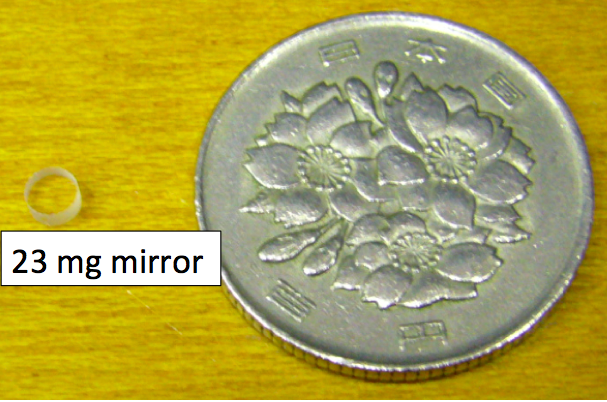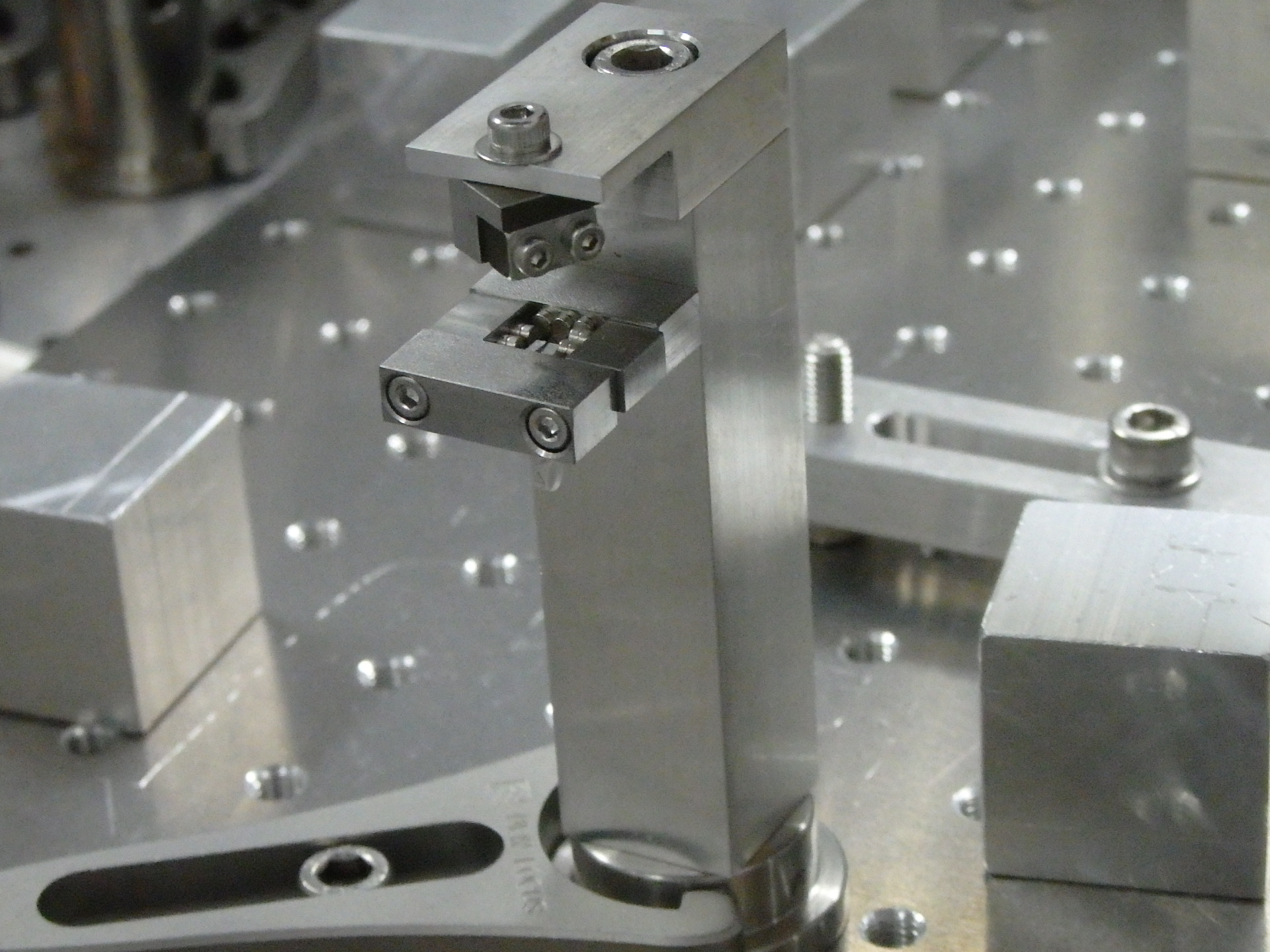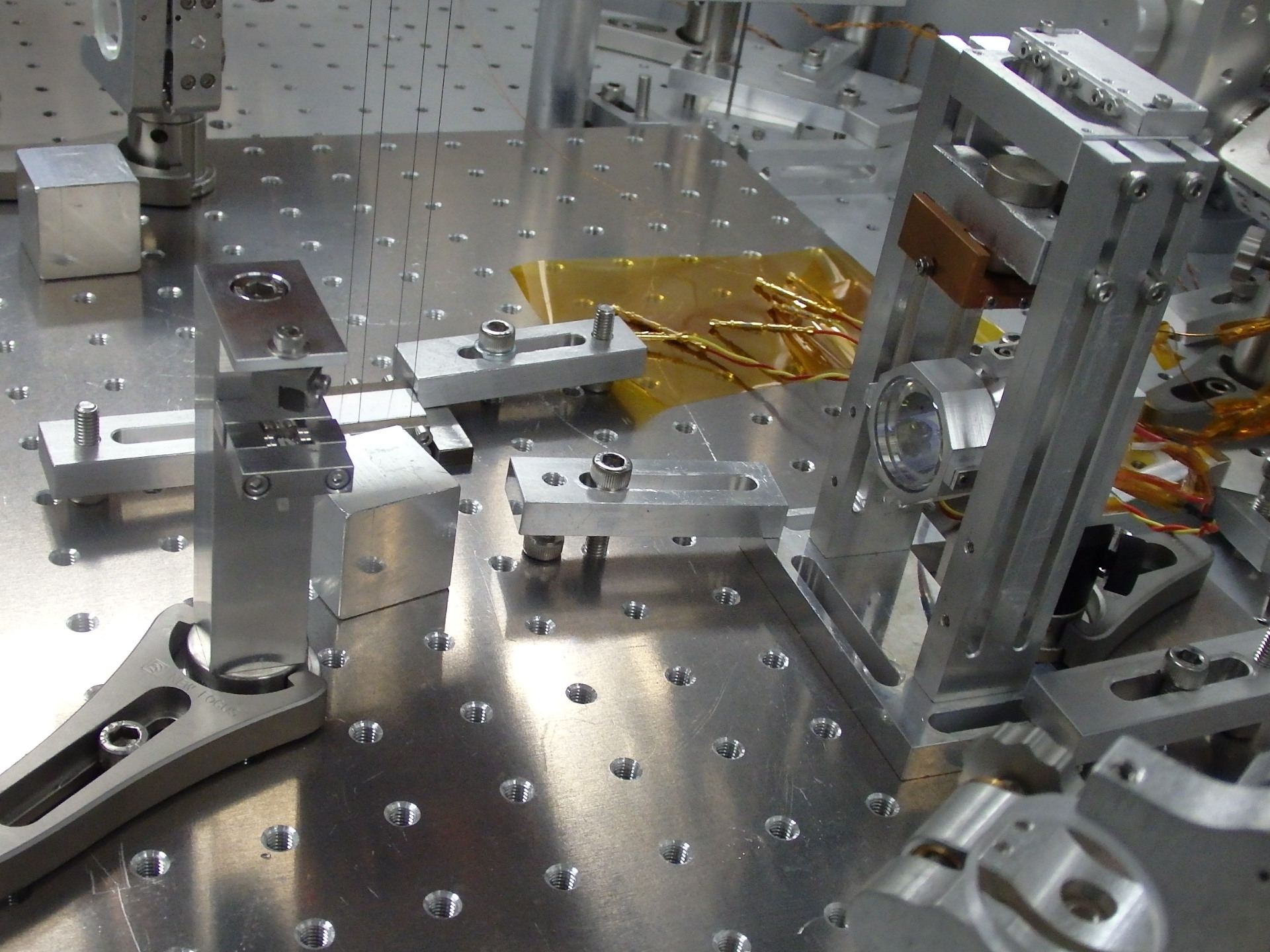QND
Members
- Seiji Karamura
- Koji Nagano
- Yutaro Enomoto
- Yuzuru Sakai
- Masayuki Nakano
Research advisor
- Akira Furusawa
Overview
The aim of this experiment is demonstrating in lab scale the technique of the quantum radiation pressure noise (QRPN) reduction by measuring the ponderomotively squeezed light with the homodyne detector. With this technique, the sensitivity of KAGRA can beat the standard quantum limit.
In order to demonstrate the QRPN reduction technique, the sensitivity limited by QRPN should be achieved. In this experiment, in order to enhance QRPN, it is planed to use the high finesse (~104) cavity consisting of 23-mg tiny mirror and ~50-g 2.54-cm mirror. Using this cavity (x2), Fabry--Perot Michelson interferometer will be construed to reduce the noise other than QRPN. As a result, the QRPN in this experiment is expected to be 104 times larger than that in KAGRA in therms of displacement noise (m/rtHz) although the laser light source with ~200 mW output power is used in this experiment.
Current status
This experiment is temporarily suspended now (2017/02/16) for lab moving. The status before the lab moving is summarized in the related paper [12]. The 23 mg mirrors are kept in the desiccator in the ICRR B1 Lab and will be moved to Ando Lab (UT).
Related papers
- S. Sakata, Study of the Reduction of the Radiation Pressure Noise in Gravitational Wave Detectors using the Ponderomotive Squeezing, PhD thesis, Ochanomizu University (2008)
- T. Mori, Development of a high power optical cavity for optomechanical quantum nondemolition measurement, PhD thesis, The University of Tokyo (2011)
- M. Nakano, Study of Opt-Mechanical Cavity Control for Development of Quantum Noise Reduction in KAGRA Gravitational Wave Detector, Master thesis, The University of Tokyo (2014)
- S. Konisho, Study of the mirror angular control for optimization of quantum noise in a gravitational wave detector, Master thesis, The University of Tokyo (2015)
- T. Nishimura, Design and development of the vibration isolation system for studying radiation pressure noise reduction in a gravitational wave detector, Master thesis, The University of Tokyo (2015)



